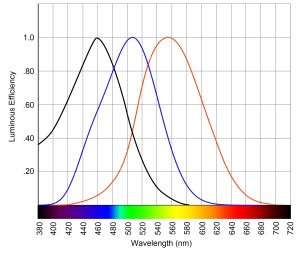Today’s New York Times has an article on several manufacturers’ new LED products that are intended to improve wakefulness, sleep, focus, and other aspects of daily life and health. The article appears on both the business and technology pages, but not on the health page, and I think that’s appropriate. Although there are testimonials by the consumers of some of these products, there’s no discussion about any peer reviewed science behind them. In fact, about two-thirds of the way through the article the author finally gets to the fact that, “Researchers are still determining how spectrum and intensity of light affect the brain.” So, the article is an uncritical look at new LED products that make health claims. We shouldn’t rely only on the claims of the manufacturers, though – remember the claims of 100,000 hour lifetimes for LED lamps?
I’m not saying that we know nothing about how light affects us, because we know quite a bit. The question is, “Do we know enough to properly and safely integrate that information into our design practice?” and there things become uncertain. So, before accepting the claims of manufacturers, or making the same claims to clients, it’s important for designers to be up to date on the current state of research and to understand the strength of the findings, as well as how (and if) those findings can be folded into a design.
There are a few web sites that I find useful for keeping up to date. The first is the Health and Vision page of the Lighting Research Center’s web site, which has links to many of their recently published research papers. The second is the Research page of USAI Lighting’s web site. This page provides links to a mix of newspaper articles and scholarly publications on a variety of topics connected to LED lighting. The third is the Research page of the IES web site. Finally, members if the IES can download copies of Leucos, and non-members can purchase copies.
LEDs continue to revolutionize the lighting industry. Most manufacturers have ended research and development for incandescent and fluorescent products. OLEDs are increasing in efficacy and prices are dropping, while new technologies (such as light emitting plasma and quantum dots) are on the horizon or already here. To preserve their client’s money, the occupant’s health and safety, and their own reputations, designers need to make sure that they don’t get swept up in the possibilities that are marketed to them before the facts are in.

